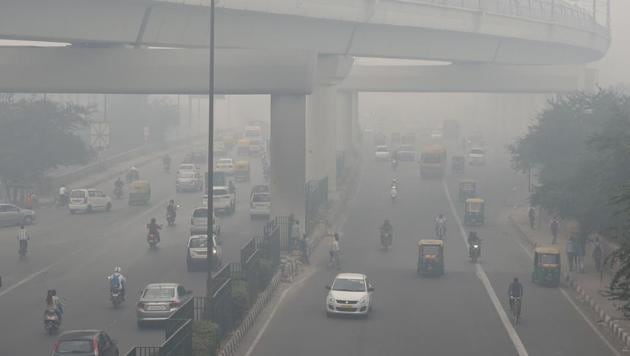After highest number of farm fires, Delhi in for foggy, polluted weekend
On Friday, the Central Pollution Control Board recommended that bans on construction work across the NCR and the entry of heavy vehicles into Delhi be extended to Monday.
Government agencies warned of a sharp deterioration in Delhi’s air quality from its already ‘very poor’ levels in the coming days after farmers in Punjab and Haryana carried out the highest number of farm fires in a single day, and a drop in temperatures increased the chances of morning fog.

During fog, moisture binds to dust particles, making them heavier and harder to disperse. Forecasters also said that the wind pattern would change to northwest – the direction from which farm fire smoke comes in.
“The concentration of PM2.5 – the ultrafine and more harmful of the particulates — is likely to shoot up over the weekend. Its levels could breach the severe or emergency category. Such conditions are likely to linger till Sunday,” said a scientist with the national capital’s early warning system, which can forecast levels of pollution two days in advance.
This comes at a time when the region is reeling under the effects of pollution due to widespread, and possibly illegal, use of firecrackers during Diwali. According to figures released by the Delhi Pollution Control Committee on Thursday on Diwali pollution, the concentration of PM2.5 reached nearly 20 times the acceptable of 60µg/m³.
On Friday, the Central Pollution Control Board recommended that bans on construction work across the NCR and the entry of heavy vehicles into Delhi be extended to Monday. Construction work was banned since November 1 till Saturday while the curbs on trucks came into force on Thursday and was to be in place till Sunday.
Satellites picked up at least 2,100 instances of farm fire in Punjab and Haryana on November 8, the most recorded on a single day. Farm leaders in Punjab had previously predicted more burning would take place, especially around Diwali since they could show it as incidental fires.
Officials in Punjab and Haryana confirmed there had been a spike in crop residue burning, a practice farmers use to quickly and cheaply ready their fields for the next round of sowing. Haryana pollution control board official S Narayanan said that more than 400 instances were recorded in the state, compared to about only 100 the day before. His Punjab counterpart, Charanjit Singh, said there were nearly 800 cases in his state but denied that that was the reason for pollution. “Had there been a major fire in Punjab, our AQI would not have shown improvement as compared to last year, he said. An official from the System of Air Quality and Weather Forecasting and Research, a government-run pollution forecasting agency, agreed with the scientist quoted above that Delhi’s pollution could deteriorate sharply. “While on one hand, the post-Diwali pollution is yet to be dispersed completely, the cold front [moving in from the northwest] is likely to bring in more pollutants. The moisture, slow moving winds and the dip in temperature will further trap pollutants close to the ground,” this official said, asking not to be named.
(With inputs from HTC in Chandigarh)
Stay updated with all top Cities including, Bengaluru, Delhi, Mumbai and more across India. Stay informed on the latest happenings in World News along with Delhi Election 2025 and Delhi Election Result 2025 Live, New Delhi Election Result Live, Kalkaji Election Result Live at Hindustan Times.
Stay updated with all top Cities including, Bengaluru, Delhi, Mumbai and more across India. Stay informed on the latest happenings in World News along with Delhi Election 2025 and Delhi Election Result 2025 Live, New Delhi Election Result Live, Kalkaji Election Result Live at Hindustan Times.






